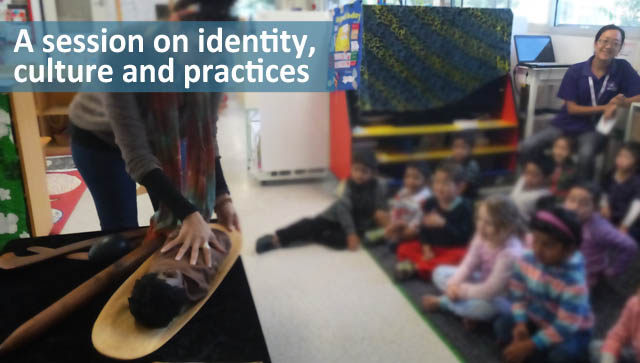Cultural Identity in Schools – Part 1
Our school attracts families from a wide variety of ethnicities and people often comment on how culturally diverse the population is. Based on the 2011 Census, 45.4% of the population here, was born outside of Australia and approximately the same percentage speaks English as an additional language. Vietnamese is the second most commonly spoken language in our community, after English. It is not surprising that in my group of 23 children, we have 20 children whose parents are not native English speakers.
I should probably add my own cultural background to the statistics. I was born in Taiwan, my family immigrated to New Zealand when I was 11 years old. After graduating from high school, we moved again, this time to the neighbouring country Australia in 1997 and have settled here ever since. My interest in travel has taken me all around the globe, picking up diverse cultural and language experiences from several continents. Now, I’m loving my job in such a culturally rich environment. Quite often people I’ve met for the first time would ask, “So, are you Aussie, Kiwi, or Taiwanese?” after learning that I carry three passports. It is a tough question to answer but I would always tell them I’m a global citizen. The rich cultural composition at my school has prompted me to think deeply about how children’s cultural identities are developed and shaped, right from their pre-prep years.
Educators nowadays are trying hard not to step on the cultural land-mine that is tokenism. We have the best intention of introducing children to the essence and uniqueness of different cultures, but we are also wary of doing activities which might appear to be a perfunctory effort of addressing a particular country’s celebration. Does showing a lion puppet and handing out red envelopes at Chinese New Year seem like a lame reference to this festival? Perhaps. However, we must not forget that children make connections with other cultures through the interaction with popular cultural elements. As stereotypical as sushis may be to the Japanese and saris are to the Indians, Chinese New Year would not be what it is without watching a noisy lion dance or receiving packets of lucky money from grandparents and relatives. When I travelled in Europe, one of people’s first reactions to Australia is “Oh, there must be many kangaroos and koalas!” While such general impressions may seem exaggerated, for a long time we have been exposed to the media coverage, internet stories or other people’s travel tales which have shaped our concept of other cultures. We probably shouldn’t stress over whether showing pictures of pizzas for Italy or spring rolls for Vietnam is going to muddle children’s idea of those countries. We have to start somewhere; what teaching resource is more powerful than those iconic images of cultural elements such as an African mask or an Aboriginal dot painting? Let’s think about adopting a “universal concept” to connect with the cultures of the different families at our services, using the most suitable artefacts and activities as an introduction. (to be continued)..
